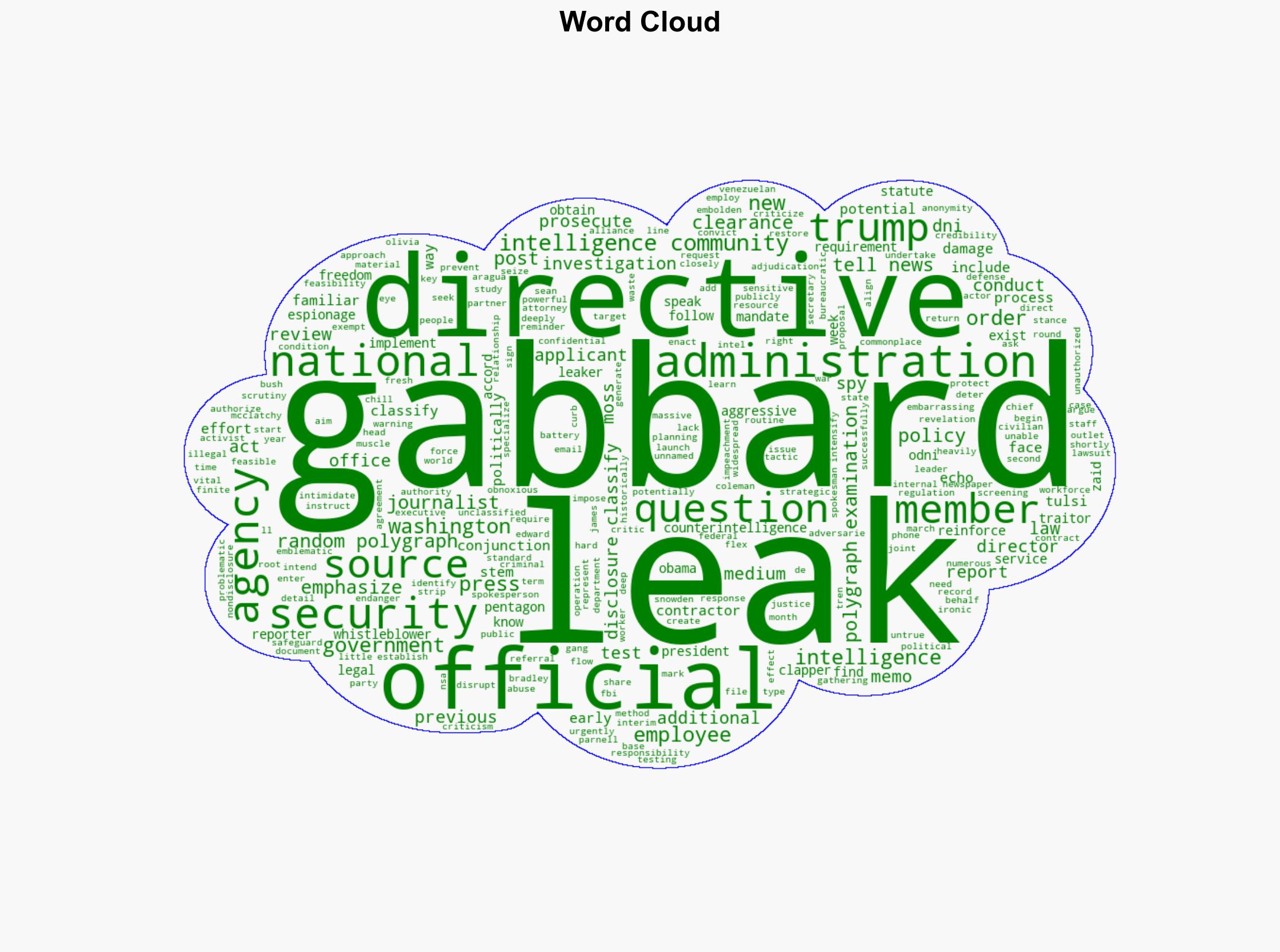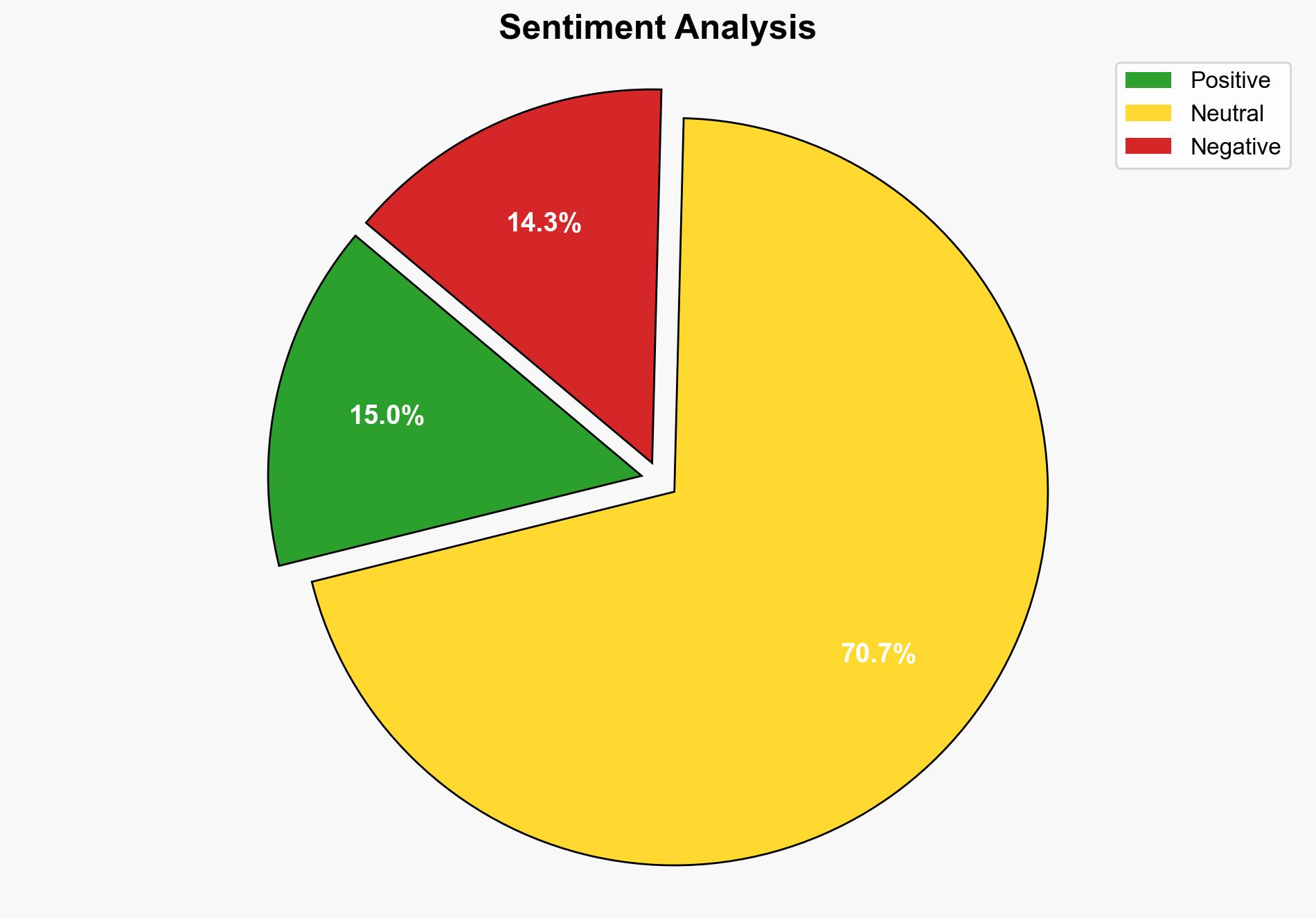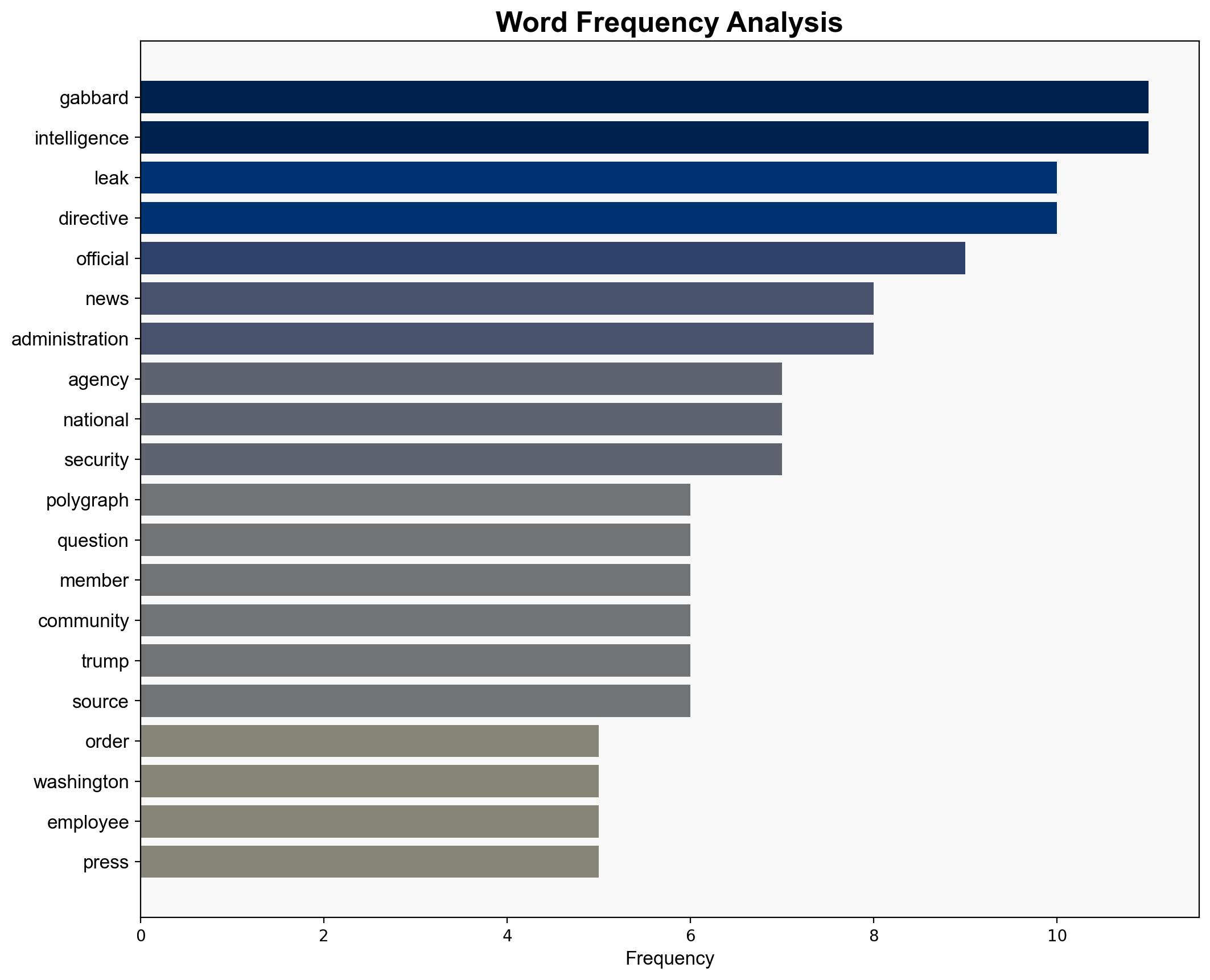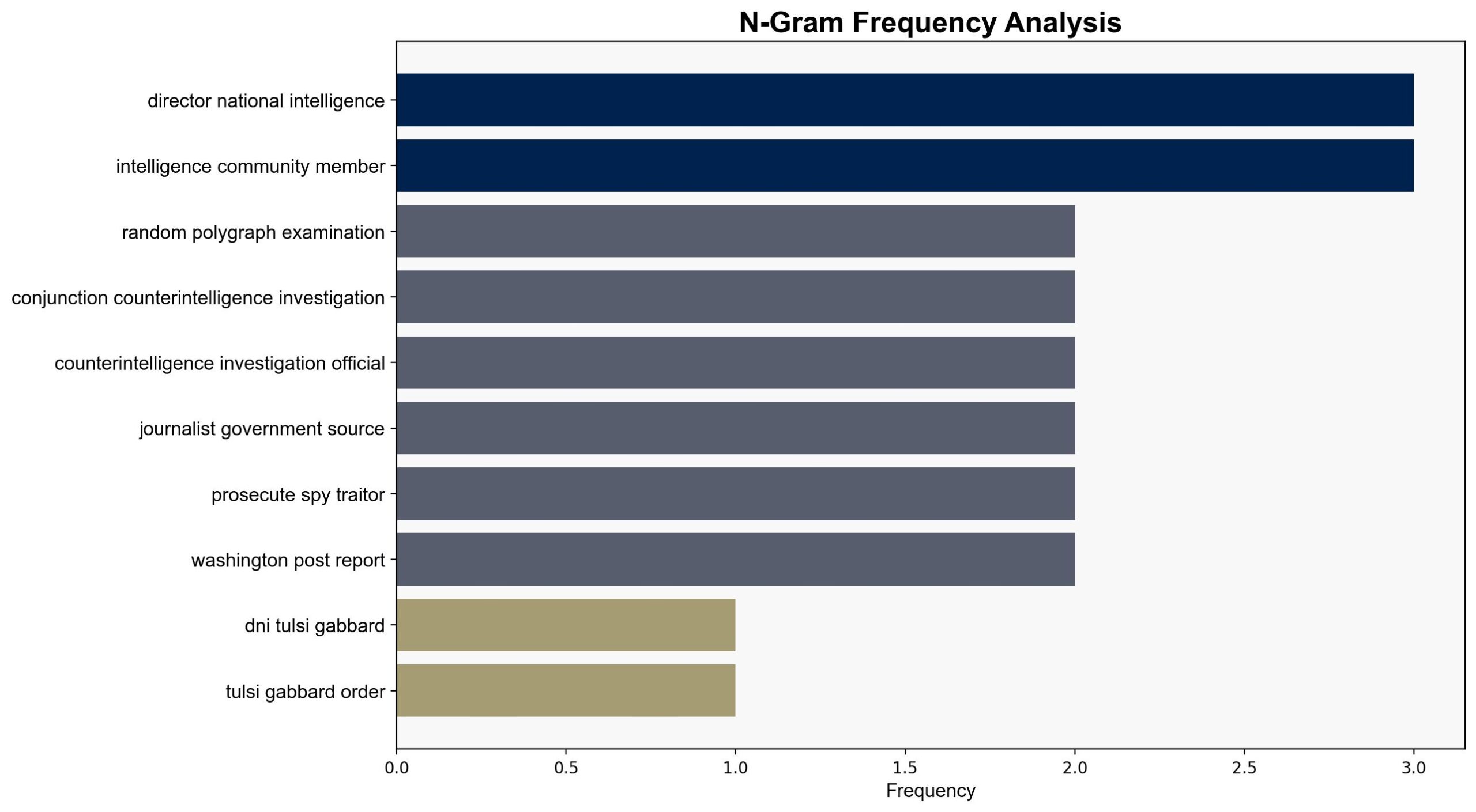DNI Tulsi Gabbard orders US intel agency leaders to stem leaks – CBS News
Published on: 2025-10-07
Intelligence Report: DNI Tulsi Gabbard orders US intel agency leaders to stem leaks – CBS News
1. BLUF (Bottom Line Up Front)
The most supported hypothesis is that the directive by Tulsi Gabbard aims to reinforce internal security measures to prevent leaks, reflecting a strategic shift towards more aggressive counterintelligence practices. Confidence Level: Moderate. Recommended action includes enhancing internal security protocols and communication strategies to manage potential backlash and ensure compliance.
2. Competing Hypotheses
Hypothesis 1: The directive is primarily a response to recent unauthorized disclosures that have compromised national security, aiming to deter future leaks through increased scrutiny and polygraph testing.
Hypothesis 2: The directive is politically motivated, designed to suppress dissent and control the narrative by intimidating potential whistleblowers and journalists through heightened surveillance and scrutiny.
Using Analysis of Competing Hypotheses (ACH), Hypothesis 1 is better supported due to the historical context of similar measures following significant leaks, such as those by Edward Snowden. The emphasis on national security and the structured approach to implementing polygraph tests align more closely with a security-focused rationale.
3. Key Assumptions and Red Flags
Assumptions include the belief that polygraph tests are effective deterrents against leaks and that increased scrutiny will not lead to decreased morale or trust within the intelligence community. Red flags involve potential over-reliance on polygraphs, which have questionable reliability, and the risk of alienating employees. The lack of detailed study results on the effectiveness of these measures is a significant blind spot.
4. Implications and Strategic Risks
The directive could lead to increased internal tension and reduced morale if perceived as overly intrusive. There is a risk of escalating distrust between intelligence personnel and leadership, potentially leading to further leaks or defections. Economically, the costs of implementing widespread polygraph testing could be significant. Geopolitically, the move might be perceived as a sign of internal instability, affecting international alliances and intelligence-sharing agreements.
5. Recommendations and Outlook
- Enhance communication strategies to clarify the intent and necessity of the directive to intelligence personnel, mitigating potential backlash.
- Consider alternative security measures that balance deterrence with employee trust and morale.
- Scenario-based projections:
- Best Case: The directive successfully deters leaks without significant internal disruption.
- Worst Case: Increased scrutiny leads to widespread dissatisfaction, further leaks, and potential defections.
- Most Likely: Initial resistance is followed by gradual adaptation, with some improvement in leak prevention.
6. Key Individuals and Entities
Tulsi Gabbard, Edward Snowden, James Clapper, Olivia Coleman
7. Thematic Tags
national security threats, cybersecurity, counter-terrorism, regional focus




